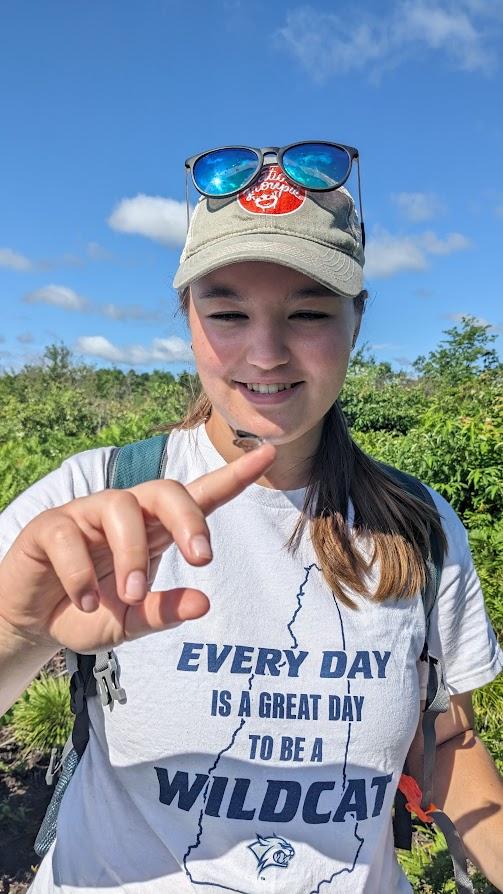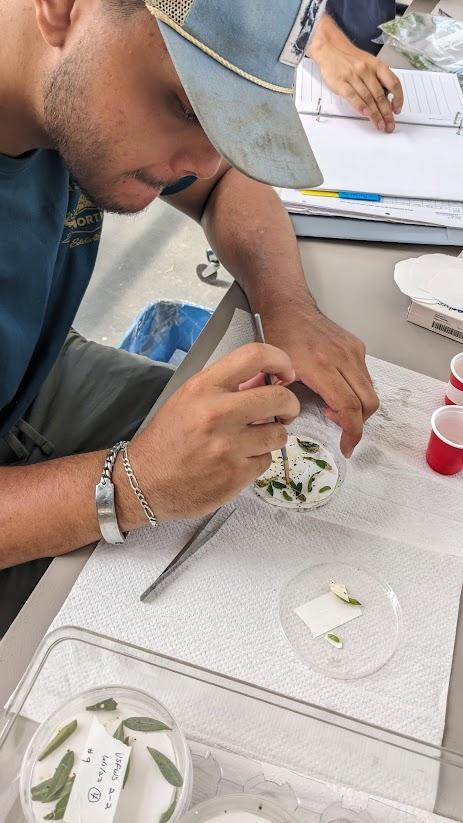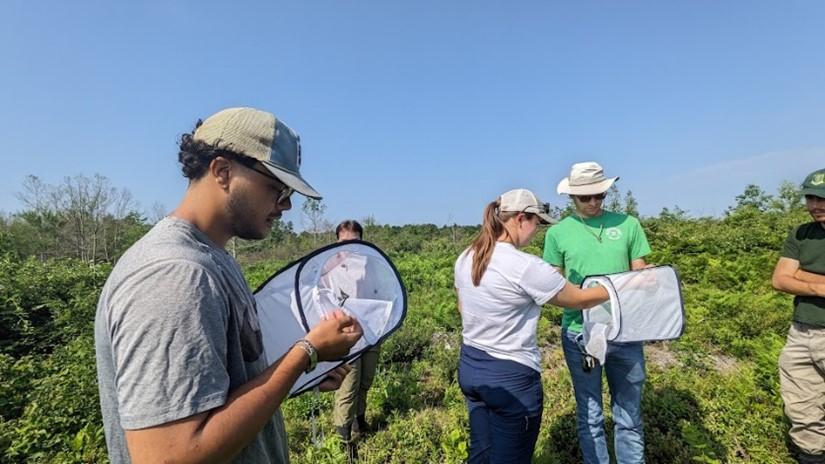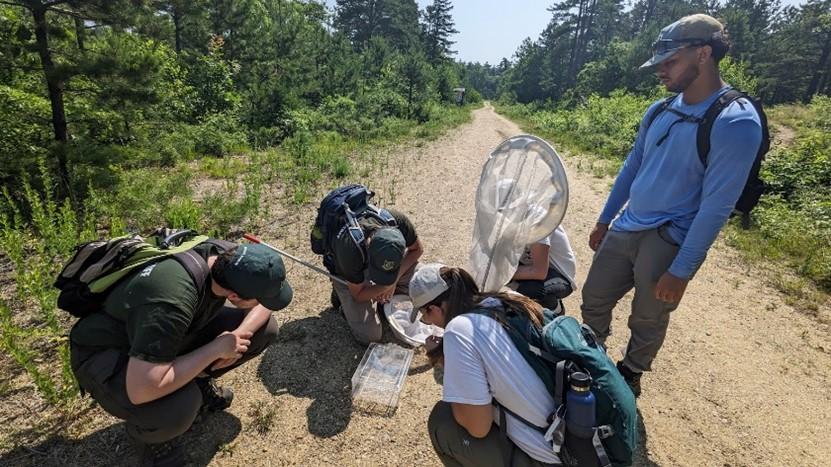The People Protecting our Endangered Butterflies

The Science.
The onset of climate change and the changing landscape of nature has brought about challenges for many species of animals, so much so that some are being driven to extinction right before our eyes. One group under threat are the pollinators of the world, butterflies, bees, bats, small mammals, etc. These small creatures are vital for spreading pollen and seeds that help flowering plants that support ecosystems, provide nutrients for other species, and provide crop and economical support for farmers. In New Hampshire, the state Fish and Game biologists are helping bring back the Karner Blue Butterly (Lycaeides Melissa samuelis) to a stable population and off the federal endangered species list, which is an established protection under the Endangered Species Act through the U.S. Fish and Wildlife Service.
Wildlife biologists and technicians, such as Dan Persico, a previous Nature Groupie intern, are hard at work to help bring back the pollinators and boost local populations through captive rearing, capture and release, and field surveys. Captive rearing allows the biologists to raise the butterflies through their life cycle stage from larva to pupa to butterfly and track the number of individuals. Capture and release is the temporary capture of the butterfly to hopefully breed and then be released back into the wild. Field surveys include counting both butterflies and the plants they prefer out in their natural habitat. In this case, the Karner Blue Butterfly loves to nest on Sundial Lupin. Data collected from this project can help other pollinators throughout the country on how best to improve numbers and protect vital plants for pollination.


Things You Can Do!
You may be asking yourself, “I like the idea of supporting butterflies and pollinators, but I’m no scientist, how can I help?” It’s easy! A great first step is to make an area in your backyard suitable for pollinator habitats. This means researching and planting which plants and flowers are best and ensuring that they have a good flower yield and proper habitat. Your local greenhouse nursery should know which plants are best to help our flying friends. Providing the right nesting site is also important, with brush piles and places for hiding being the best. Planting the right plants isn’t enough though, we also need to eradicate pesky invasive plants that will take over and suck up all the proper nutrients, as well as avoid pesticides as much as possible.

Another way to help is to get involved with local organizations and volunteer opportunities. The Xerces Society, Nature Groupie, Fish and Game divisions, the North American Butterfly Association, the North American Butterfly Monitoring Network as well as many other organizations offer volunteer events to help pollinators, from invasive plant removal, species release, and educational talks to help inform the public about pollinator conservation. However you decide to get involved, it takes a collective effort from all of us to preserve these vital creatures to support healthy ecosystems and provide a world in which all living things can benefit.
